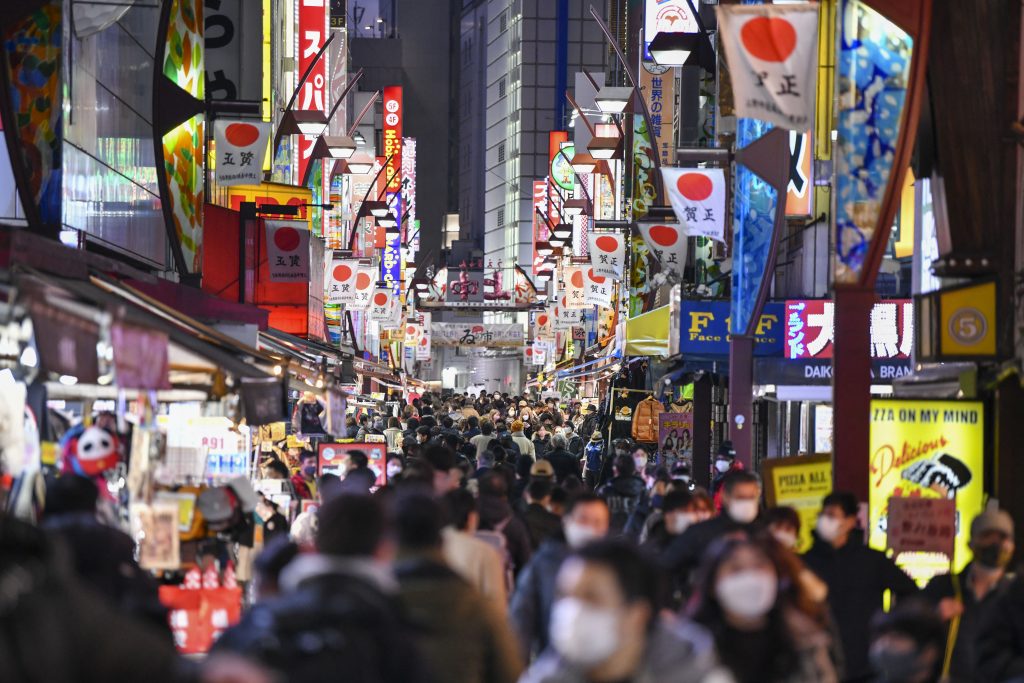
- ARAB NEWS
- 24 Apr 2024

TOKYO: With new cases of the novel coronavirus showing signs of a rebound across Japan, experts and others warn that the country is entering a seventh wave of infections.
While being eager to contain the rise in new cases without halting social and economic activities, the government is stepping up efforts to promote COVID-19 booster vaccination among youths. New cases are increasing rapidly among young generations.
In order to prevent the medical system from being strained, the government is also introducing a system that allows elderly coronavirus patients to receive medical treatment at the care facilities where they live.
“New infection cases have been increasing nationwide for over a week,” economic revitalization minister Daishiro Yamagiwa said at a meeting of a government panel of experts on COVID-19 Friday.
Yamagiwa, who is in charge of the government’s COVID-19 measures, called for attention to the spread of the BA.2 subvariant of the omicron strain of the novel coronavirus, which is believed to be more infectious than the original omicron variant.
The ongoing rise in new cases, which came less than a month after the government fully lifted its COVID-19 pre-emergency designations March 22, came apparently due to the spread of the BA.2 subvariant.
“We are already in a seventh wave of infections,” Denny Tamaki, governor of the southernmost prefecture of Okinawa, has said.
The BA.2 subvariant is now suspected to account for nearly 70 pct of new COVID-19 cases in Tokyo. A senior health ministry official projected that the share will reach 90 pct in the Japanese capital after the Golden Week holiday period between late this month and early May.
Many in the government apparently hold the view that a certain level of rise in new cases is unavoidable.
Since the omicron variant, unlike previous variants, has been found not to cause severe symptoms, the government is now shifting its focus to keeping the peak of the infection wave as low as possible to help the nation avoid stagnation in economic activities.
Members of the expert panel, who had put weight on restricting people’s movements to prevent the virus from spreading, are now cautious about imposing pre-emergency measures again, noting that the country is starting to lose strength in all sectors amid the prolonged pandemic.
A key to containing the rebound in new cases would be promoting the administration of third, booster shots of coronavirus vaccines for youths as experts warn of “a marked rise in infections” among such people.
Booster vaccination has been completed for more than 80 pct of people aged 65 or over around the country.
Meanwhile, the proportion of people who have received booster shots stands above 40 pct across generations around the country, and the rate is as low as some 20 pct for Tokyoites in their 20s.
Satoshi Kamayachi, an executive of the Japan Medical Association, said, “A number of clinics across the country have said they cannot fill reservation slots for booster vaccination.”
The government is offering financial aid for mass vaccinations at universities as part of measures to encourage people in the 10-29 age group to get booster shots.
During previous waves of infections, there were cases in which conditions of elderly coronavirus patients who need nursing care and other support worsened after being hospitalized.
The health ministry is encouraging doctors to visit elderly care homes to treat residents infected with the virus, in order to make as many hospital beds as possible available to other patients.
JIJI Press